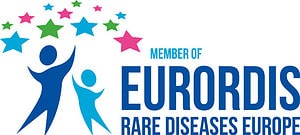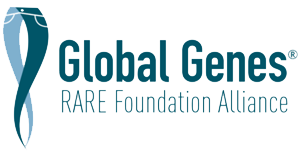General Info for MERRF: Myoclonic Epilepsy with Ragged-Red Fibers
Overview
Myoclonic epilepsy with ragged-red fibers, also known as MERRF, is a rare mitochondrial condition where the mitochondria are not able to make proteins, use oxygen, and produce energy properly. Mitochondria are parts of a cell that help turn the energy we get from food into energy that the body can use. They are also important in the communication between body parts and creating other materials the body needs. Mitochondrial conditions can cause a variety of signs and symptoms in many parts of the body, particularly those that use a lot of energy like muscles and the brain.
Alternative Names
- MERRF
Genetics
Affected Genes
MT-TK, MT-TL1, MT-TH, MT-TS1
Inheritance Type(s)
- Mitochondrial
Cause and Genetics
MERRF is an inherited genetic condition, meaning it is passed down in a family. MERRF is caused by changes in the mitochondrial genome (mtDNA) or set of DNA contained in the mitochondria of a cell. Mitochondria are inherited from the mother through her eggs. People typically do not inherit any mitochondria from sperm, making it very unlikely for mitochondrial conditions to be passed down from a father. Both males and females can have MERRF.
Changes, sometimes called mutations or variants, in the gene MT-TK are the most common cause of MERRF (over 80%). Changes in other genes including MT-TL1, MT-TH, MT-TS1 and others have also been reported in those with MERRF. People with changes in these other genes may have signs and symptoms of other mitochondrial conditions, as well as those known for MERRF.
Frequency
Frequency (Global)
1:100,000
Frequency - More Information
The exact frequency of MERRF is not known. Most sources state that less than 1 in 100,000 people have MERRF; however, some researchers believe that MERRF is underdiagnosed and may be more frequent than currently reported. Frequency also varies by country.
Affected Biological Gender
Both Male and Female
Signs and Symptoms of MERRF: Myoclonic Epilepsy with Ragged-Red Fibers
MERRF can cause a range of signs and symptoms. The exact features, onset, and severity can vary widely among people with this condition, even among members of the same family. Always check with your provider if new symptoms appear or you are concerned. Signs and symptoms may include:
- Muscle twitches (myoclonus), weakness (myopathy), or increasing stiffness (spasticity), or difficulties controlling movement (ataxia)
- Seizures (epilepsy)
- Loss of sensation in parts of the body like feet and hands (peripheral neuropathy)
- Slow loss of intellectual function (dementia)
- Hearing loss
- Vision loss (optic atrophy)
- Shorter height than family members
- Enlargement of part of the heart (cardiomyopathy)
- Diabetes
- Fatty tumors just under the surface of the skin (lipomas)
Diagnosis
MERRF can be diagnosed by:
- Muscle biopsy showing ragged red fibers (RRF)
- Measuring biochemical markers such as lactate and pyruvate in the cerebrospinal fluid (fluid surrounding the brain and spinal cord)
- Brain studies and imaging looking for changes in the structure of the brain, the presence of lactate in the brain, or seizure activity (MRI, MRS, EEG)
- Heart studies looking for rhythm changes (EKG)
- Nerve studies (nerve conduction velocity study/NCV) to look for nerve function
- Performing a genetic test to look for changes in the MT-TK gene and other genes known to cause MERRF
Newborn Screening: Recommended Uniform Screening Panel (RUSP)
No
Newborn Screening - More Information
Treatment of MERRF: Myoclonic Epilepsy with Ragged-Red Fibers
Treatment and Management
Treatment and management of MERRF may include:
- Traditional medications for seizures called antiepileptic drugs
- Physical therapy and aerobic exercise to support muscle function
- Traditional treatment of heart conditions
- Supplements including Coenzyme Q10 and mito “cocktails”
- Hearing aids or cochlear implants for hearing loss
- Traditional treatment of diabetes
- Avoidance of mitochondrial toxins like certain drugs, tobacco, and alcohol
- Monitoring during pregnancy for diabetes and lung function
Type of Specialists and Clinicians
- Audiology
- Cardiology
- Endocrinology
- Neurology
- Ophthalmology
Resources
- Myoclonic epilepsy with ragged red fibers – About the Disease – The National Institutes of Health
- MERRF Syndrome – National Organization for Rare Disorders
Connecting with others impacted by a rare disease allows for vital information to be shared about day-to-day life, prevents isolation, and gives hope. Please contact MitoAction for peer support opportunities at 888-MITO-411 or email mito411@mitoaction.org.
Other resources we recommend are:
Download the MERRF: Myoclonic Epilepsy with Ragged-Red Fibers Fact Sheet (PDF)
MitoAction does not provide medical advice, diagnosis, treatment, or legal advice. It is essential that all those living with or caring for someone with a Mitochondrial or FAOD disease have an emergency protocol letter. These letters, which are written and signed by a doctor, share details about prescribed treatment during crises and in emergency room settings. Always check with your doctor if you or your child has concerns as everyone may present with symptoms differently. Before beginning any treatment or therapy, please consult with your physician.
Last Updated: 11/15/2022









